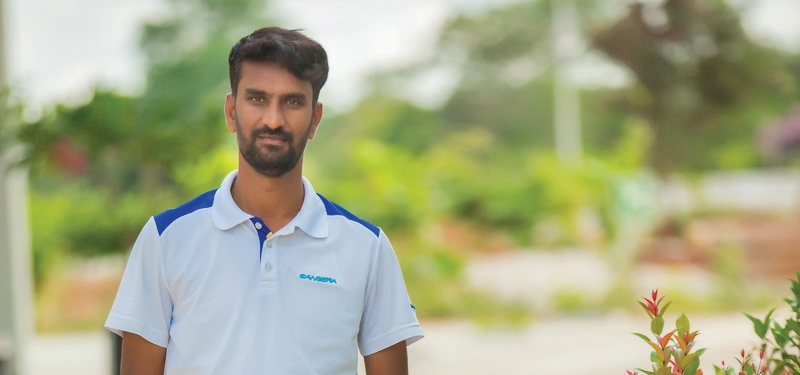The Lake Man Of Bengaluru

Anand Malligavad has devoted himself to bringing Bengaluru’s lakes back to life
For a little boy who grew up clambering up trees in the grove around the lake near his school, Anand Malligavad probably had his destiny written down way before he realised it. Growing up in Kalmudi village, Malligavad’s school was right next to the lake that supplied drinking water. “My government school was just 20 steps away from the lake,” he remembers, with all the excitement of one fondly remembering a wonderful childhood.
Getting into the engineering sector meant the inevitable, as for most such professionals in India. A move to Bengaluru, formerly known as the city of the lakes. Home to 262 water bodies in 1960, the city of lakes now has only 34 thriving water bodies, pitiful number by any count. “I am happy that Bengaluru is one of the world’s fastest growing cities in India,” says Malligavad, but he is concerned that the growth comes at a very hefty price. Malligavad’s interest in the environment has been something that prompted him to take time out to do projects that sparked joy in him. Even if it was bringing native plants back to Bengaluru, within his office campus at Sansera Engineering. Not surprisingly, Malligavad also headed Sansera Foundation, the CSR wing of the company for 10 years.
“THERE IS NO POINT IN CLEANING UP ONE LAKE, IF THE LAKE UPSTREAM IS BEING FILLED WITH DUMP, AND THAT OVERFLOWS INTO THIS ONE DURING THE NEXT STORM. MY THOUGHT IS TO CLEAN THEM UP SYSTEMATICALLY AND IN A SUSTAINABLE MANNER.”
Anand Malligavad Crusader for clean lakes
The 38-year-old first decided to spruce up Lake Kyalasanahalli, a 36-acre water body. And he achieved this in a mere 45 days! “We began the work on April 20, 2017, with a budget of INR 1.17 crore, provided by Sansera Foundation,” he says. He spent a lot of time reaching out to the local community nearby, almost 400 homes, spending time with them and making them understand the need to restore the lake. The one thing the mechanical engineer realised was that bringing specialists on board would mean a whole lot of financial outflow, which would take away from the funds available to actually clean up the lake.
So he cleared up nearly 4 lakh cubic meters of mud from the lake, using three earth movers and six trucks. This mud was used to build five islands in the lake, all of them planted with native species of fruit bearing trees, to function as a nesting ground for various indigenous species of birds. The dried up lake was being used partly as a playground, and partly as a dumping ground for waste. By diverting two stormwater drain canals, and thanks to the bountiful rains that September, the lake—which had been dead for 35 years—came back to life. He did not stop there but went to do some afforestation, using the Japanese Miyawaki method. “This helps us create denser forests in each square feet area than is possible with normal afforestation methods,” he says. “This was the only bit for which I used volunteers.”
He was so motivated by the result that he has planned to rejuvenate 45 lakes by 2025. “All the water bodies are interconnected,” he explains. “There is no point in cleaning one up, if the lake upstream is being filled with dump, and that overflows into this one during the next storm. My thought is to clean them up systematically and in a sustainable manner so that they can thrive for centuries.” He is opposed to the idea of governments renovating water bodies and using them as commercial tourist spots. The dense Miyawaki forests help keep crowds out, while helping the lake thrive, explains Malligavad, who quit his job to work on his real calling: saving lakes.
Back to A Nation of Change Makers
















